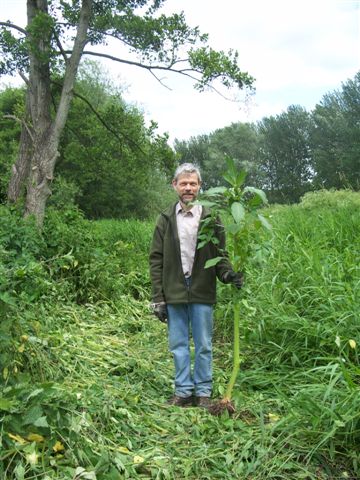CROW (Conserve Reading on Wednesdays)
Wednesday, 20th June 2007
Kennet & Avon Canal, Fobney Lock, Reading ~ Himalayan balsam clearance

aka Bee-Bums, Indian Balsam, Jumping Jacks, Nuns, Policeman's Helmet, Poor man's Orchid.
Arriving from India in 1839 to inhabit the greenhouses of Victorian England, Himalayan Balsam soon made clear it was happy with an outdoor life and by 1855 had made its bid for freedom. Now found across much of England and Wales, it prefers river and canal banks and other places where the soil is moist, growing up to 3 metres tall and out competing most other species including nettles.
An annual, each plant can be produce up to 2,500 seeds, the explosive opening of the seed pods sending them up to 7 metres. The seeds can also be carried by water.
Whilst its nectar attracts many insects including the Hummingbird Hawk Moth, Himalayan Balsam's vigorous growth results in the destruction of the native vegetation and leaves the soil exposed increasing the risk of erosion.
This June (2007), Econet ran two tasks clearing Himalayan Balsam along the banks of the Kennet between Katesgrove (Temple Place) and Fobney Lock. It was pleasing to note that the balsam was much reduced in the areas we cleared in the previous year, our efforts probably helped by the hot, dry weather which prevailed at the time. However this year's rain has already resulted in some regrowth.